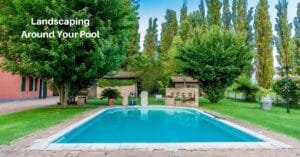Did you know that not all sand is created equal? There are several kinds of sand; each works well for different purposes. They vary in texture and cost. So how do you know which to buy?
We want to point out that these “types” aren’t always exact. There is no regulating body that defines the makeup or consistency. And if you look around the internet, you’ll find some of these combined into one group or subdivided into several. We’ve tried to make sense of all the information and make it align with what’s available from your local landscaper or retail store.
Play Sand
Play sand is the finest of all types of sand. It’s ideal for sandboxes because there is no silica in it.
It’s a natural product that’s been thoroughly cleaned and filtered. Usually, pressure washing is used to remove any dirt or debris. This process also breaks up any clumps.
If you have a sandbox, sand table, or other toys for children that use sand, be sure to keep it clean.
Kids love sandbox toys – check these out! They’re great for building sandcastles.
Beach Sand
Beach sand and play sand are nearly identical. Beach sand forms naturally, but many areas truck it in to fill great, relaxing strips along lakes or oceans.
However, there is often more tolerance for dirt and silica in beach sand. It has a fine grain and could be acceptable for children’s play, too.
Mason Sand
Mason sand (sometimes written “masonry sand”) is not quite as fine as play sand. It has more silica than beach or play sand, meaning it feels a bit rougher on the skin. But it doesn’t have the impurities or tiny pebbles that can be part of fill sand.
This type of sand is great for filling narrow joints between pavers or other walking surfaces. However, it’s not ideal under these materials.
Mason sand is also good for top-dressing your lawn. It does a good job filling in aeration holes and helps level rough spots.
Pool Filter Sand
Many pool filters use sand to help trap debris and keep your water clean. This sand usually does have a decent amount of silica because it can help trap particles.
Fill Sand
Fill sand lives up to its name. It’s wonderful for filling holes. It has a high amount of silica particles and contains fine gravel.
This material is ideal below pavers, bricks, or other walking surfaces because it compresses well and forms a solid base.
Conclusion
The many textures of sand lend themselves to a variety of uses. Your landscaper can help you choose the correct one but our short guide here will get you started in the right direction. Be especially careful to select sandbox sand carefully so it won’t irritate children’s skin!









